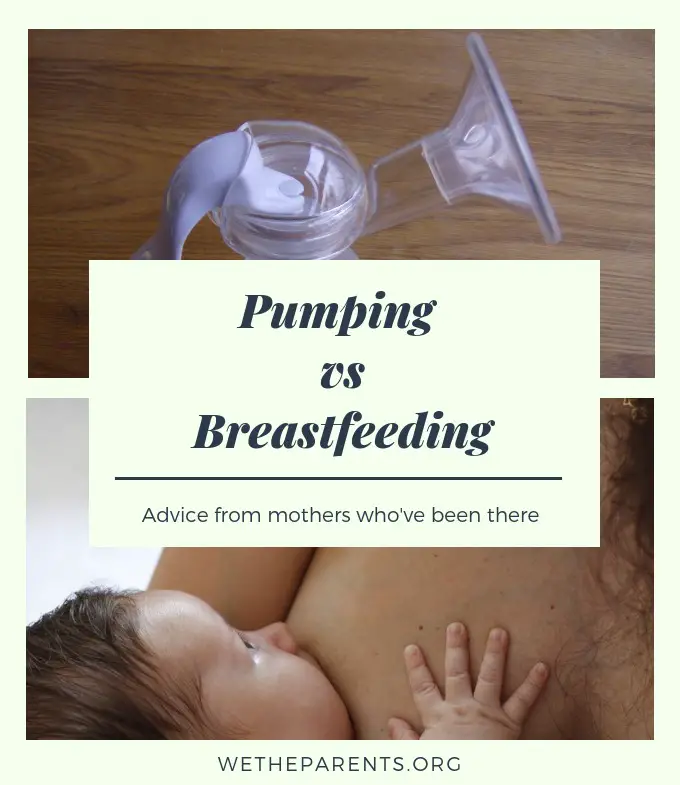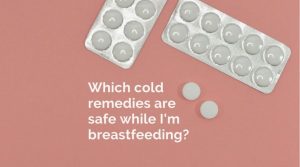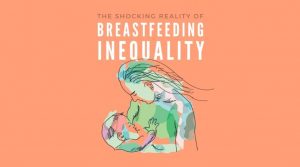As a mom, you are undoubtedly aware that breast milk is what’s best for your baby. But did you know that how your baby ingests that milk can influence everything from family bonding to the type of breast milk your body produces?
Pumping breast milk and breastfeeding tend to be viewed as virtually the same thing when, in fact, both have their own unique advantages and disadvantages. Before you decide to pump exclusively or to never let your baby’s lips touch a bottle nipple, be sure to see the options from both sides.
Pumping
The long and short of pumping is that you utilize a device that attaches to your breast and ‘suctions’ your milk into a container. These can be electronic or manual, and come in enough varieties that virtually any mother who decides to pump can find one that’s both comfortable and effective.
Pros
Family bonding — Since breastfeeding is, quite literally, a one-woman job, the rest of the family misses out on the intimate bonding that nursing the baby provides.
Pumping gives your baby the benefits of breastmilk while dad, auntie, or grandma can bolster their relationship with their newest family member by giving her a meal.
Share the responsibility (but be cautious) — Your baby will be an eating machine for the first, oh, eighteen years of life! No, seriously, your infant requires feeding every couple of hours for the first few months, and that means a lot of sleepless nights for you while breastfeeding.
Using a bottle means that your partner can take some of the load off your chest and share some of that nighttime responsibility.1Is My New Baby Eating Enough webmd.com/parenting/baby/new-baby-eating-enough#1
However, be cautious when delegating feeding duties; if someone else is feeding the baby with a bottle, especially several times in a row, or at the same time each night, you’ll still need to pump to let your body know to keep making milk during those times.
Frequently, or consistently, “skipping” a feed at the breast will result in a decrease in your supply. Something to be considered when sharing feeding responsibilities.2Introducing a Bottle to a Breastfed Baby
llli.org/breastfeeding-info/introducing-a-bottle-to-a-breastfed-baby/
Calorie counting — There’s no shame in wanting to drop that baby weight as soon (and as healthily) as possible, and pumping can be a pretty useful tool to help you balance your diet.
Instead of broad generalizations of a breastfeeding mother’s caloric needs, you’ll be able to calculate the exact number of calories you are putting out with relative ease. Simply start with 22 calories per 1 ounce of milk and plan your day from there.3Bonyata, K. (2018). Do breastfeeding mothers need extra calories or fluids.
kellymom.com
Related: Which cold remedies are safe while breastfeeding?
Cons
Expenses — Pumping can quickly become quite pricey, depending on your individual needs. While there are bargain pumps on the market starting in the $20 – $40 range, you can easily find yourself spending several hundred dollars on something a bit more upmarket.
Don’t forget there are bottles, nipples, plus all those extra sanitizing products to consider.4How Much Does a Breast Pump Cost?children.costhelper.com/breast-pump.html
More cleaning — Speaking of sanitizing: every bottle, nipple, and piece of equipment used to pump will need to be cleaned regularly.
The CDC advises that your pump be sanitized every time it comes into contact with your milk; this means disassembling its parts and making sure everything gets a thorough clean. It’s also recommended to disinfect the pump’s dials and power switch before each use.5How to Keep Your Breast Pump Kit Clean
cdc.gov/healthywater/pdf/hygiene/breast-pump-fact-sheet.pdf
Slow to thaw, slow to warm — When thawing out your frozen breastmilk, do so by leaving it overnight in the fridge or by running/soaking it in warm water. To gently heat it up before feeding, use only warm water.
The use of a microwave, which can be tempting if you’re in a rush, is NOT recommended; nor is using boiling water. Not only might you create ‘hot spots’ in the milk that could burn your baby’s mouth, but you may also run the risk of destroying valuable nutrients.6Normal prolactin levels in breastfeeding mothers
kellymom.com/bf/normal/prolactin-levels/
The PM pump — Just because you are pumping doesn’t mean you completely escape from waking up from your evening slumber. It’s recommended that you express at least one night pump. That’s when prolactin, a hormone that helps to ensure consistent milk production, is at its highest.
A baby nursing or a pump pumping stimulates the release of that prolactin, which, in turn, tells your breasts to keep making milk.7Proper Storage and Preparation of Breast Milk
cdc.gov/breastfeeding/recommendations/handling_breastmilk.htm
In this case, the major pitfall of a late PM pumping is that, whereas breastfeeding is an intimate bonding experience, pumping can be a bit…impersonal. Since it can feel less emotionally rewarding, it might make forcing yourself out of bed at 2 am slightly more difficult.
Breastfeeding
If you prefer your baby to drink straight from the tap, you’ll be met with plenty of pros, but alas, it’s not all roses and sunshine in Boob Land.
Pros
Mommy-baby bonding — Breastfeeding is one of the first forms of bonding you can experience with your child. The skin-to-skin touch, loving eye contact, and trust-building that occurs while nursing will not only promote healthy development in your child but also release hormones that engage your natural motherly instincts.8Psychological Benefits of Breastfeeding healthychildren.org/English/ages-stages/baby/breastfeeding/Pages/Psychological-Benefits-of-Breastfeeding.aspx
Less chance of overfeeding — Breastfeeding has been shown to decrease later cases of obesity in children. It’s thought that, when bottle feeding, we moms might unintentionally cajole our kiddos into eating more than they otherwise would.
Many professionals believe that, since nursing directly from the breast encourages the baby to decide when she has had enough, she is learning to self-regulate. Discovering self-control before it even becomes a ‘problem’ can have solid positive effects on your baby later in life!9Understanding How Breastfeeding Affects Obesity
healthland.time.com/2013/08/13/understanding-how-breastfeeding-affects-obesity/
Baby’s backwash — Excuse me? OK, just hear us out! While bottle-feeding your milk to your baby is considerably healthier than formula, allowing your baby to nurse directly from the breast can add a whole extra dimension to their nutrition. Evidence shows that your child’s saliva can be taken up into the mother’s body, sending a message about what antibodies, nutrients, and fat/glucose balance your baby needs, and then, just like magic, your breasts will produce them. 10Breastmilk-Saliva Interactions Boost Innate Immunity by Regulating the Oral Microbiome in Early Infancy
pubmed.ncbi.nlm.nih.gov/26325665/Backwash from nursing babies may trigger infection fighters
sciencenews.org/blog/growth-curve/backwash-nursing-babies-may-trigger-infection-fighters
Breastmilk quality control — While we all do our best to clean everything as best we can, none of us is infallible, and your pumped milk will come into contact with several foreign surfaces before reaching your baby’s tummy.
From pump to bottle, each time you move your breast milk between containers or tubes, there’s a chance that bacteria could contaminate your child’s next meal. When the baby is nursing directly from your breast, your milk travels from point A to point B with no pitstops in between, eliminating the chance of cross-contamination.11Bowen, A., Wiesenfeld, H. C., Kloesz, J. L., Pasculle, A. W., Nowalk, A. J., Brink, L., … & Tarr, C. L. (2017). Notes from the field: Cronobacter sakazakii infection associated with feeding extrinsically contaminated expressed human milk to a premature infant—Pennsylvania, 2016. MMWR,
Morbidity and Mortality Weekly Report, 66(28),761.
cdc.gov
You never leave home without them — Life gets really busy, really fast. One day you might find you have remembered to bring plenty of extra diapers, packed not one, but two extra outfits for your infant, brought plenty of water to keep yourself hydrated during your commute, and have even arrived for your lunch date across town five minutes early… but left the cooler with your breastmilk on the counter!
But consider this; you’ll never leave your breasts in a cooler on the counter.
Related: Does smoking weed while breastfeeding harm my baby?
Cons
Poor latch consequences — Some babies never seem to develop a proper latch with their mother’s nipple. If this happens occasionally, it can be frustrating and disheartening. If it’s happening all the time, perhaps due to prematurity or another medical condition, it can be downright harmful.
When an improper latch leads to improper nutrition, you’ll see your baby fail to thrive and may also find your nipples extra sore, badly cracked, or even sometimes experience mastitis, several times over.12Breastfeeding: Ineffective Latch-On or Sucking cincinnatichildrens.org/health/b/ineffective-latch
Editor’s note:
While breastfeeding is a natural process, there is still a learning curve for both you and your baby. Don’t feel as though there’s something wrong if breastfeeding doesn’t come easily right away.
There are many parts of latching and breastfeeding that require practice and patience, and finding a good lactation consultant to help you along the way is invaluable. Ask your OB, midwife, or even your child’s pediatrician, for a recommendation on lactation services in your area!
Awkward in public — Whether due to cultural issues, outdated local laws, or good old-fashioned shyness, breastfeeding in public remains a hurdle that many women struggle with, sometimes to the point of remaining hidden behind closed doors to avoid the situation altogether.
Having a freezer of breastmilk-filled bottles that you can thaw and take on the go can certainly alleviate any issues you’re having with breastfeeding your baby in public.
Unknown amounts of milk — Bottles have the advantage of being transparent, with helpful measurement markers. Our breasts, however, are neither transparent nor pre-marked for milk amounts. So you’ll never know exactly how much your baby is ingesting with each nursing session.
Editor’s note:
While it’s true you can’t tell exactly how many ounces your baby eats at the breast, there are many reliable ways to ensure they are getting enough. Regular wet diapers, moist lips and tongue, being content between feedings, and steady weight gain are all clear evidence that your baby is getting enough to eat.
For babies struggling with weight gain, or mothers that need some extra reassurance in the beginning, your pediatrician or lactation consultant can help you do a weighted feed (where you weigh your baby in nothing but a dry diaper before and after a feeding) to help assess how much they are getting from the breast.
Related: How to Dry up Your Breast Milk Quickly and Naturally
Wrapping up
There are countless reasons why you could choose to pump exclusively. It can be a great way to monitor your baby’s milk consumption, keep track of your caloric needs, and, perhaps, even be medically necessary for your little one’s health.
There are also countless reasons why you might prefer to breastfeed exclusively. After all, it’s a wonderful bonding experience, you won’t have to worry about cross-contamination, and you’ll never accidentally leave your breasts behind as you run out the door.
Then, of course, there’s the third option. Perhaps you’ll discover your meal-time sweet spot by, instead, deciding to integrate both approaches into your daily life.
Remember, raising a child is not about what the rest of the world tells you. It’s about what is best for yourself, your child, and your family.








